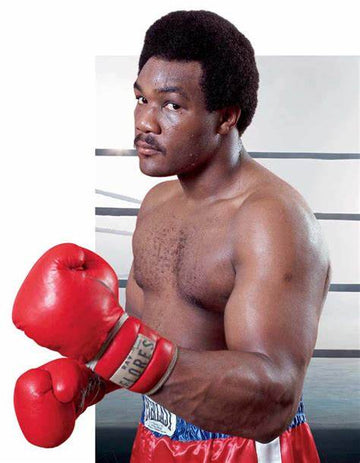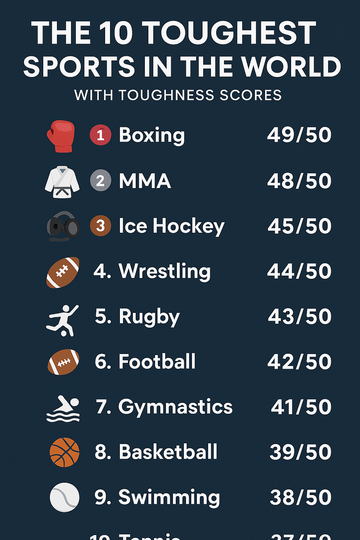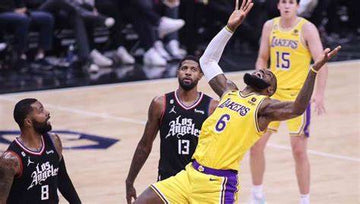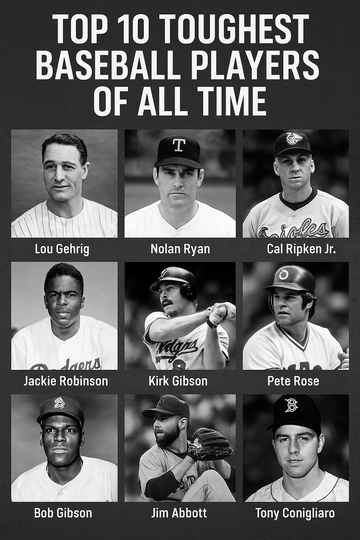The Life of George Foreman: From Knockouts to Comebacks and Second Chances
by Nyden Kovatchev on Apr 05, 2025

George Foreman’s life is a powerful story of transformation—an odyssey of grit, redemption, and reinvention. From rising out of poverty to becoming a two-time world heavyweight champion, and later, a beloved entrepreneur and preacher, Foreman’s journey offers more than boxing legacy—it offers a masterclass in perseverance, humility, and second chances.
Humble Beginnings in Houston
George Edward Foreman was born on January 10, 1949, in Marshall, Texas, and raised in the rough Fifth Ward neighborhood of Houston. The fifth of seven children, Foreman grew up in poverty. He was a troubled youth—angry, quick to fight, and expelled from school multiple times. By age 15, he had dropped out entirely and was hanging around the streets, often in trouble with the law.
But there was something simmering beneath the surface: raw, untapped potential. At 16, a turning point came when Foreman joined the Job Corps—a government program offering education and vocational training to underprivileged youth. It was there that he met Doc Broadus, the man who would change his life by introducing him to boxing.
Discovering Boxing
Foreman took to boxing naturally. His size, strength, and ferocious attitude made him a fearsome opponent. Within a year, he had become a dominant amateur, winning the 1968 National Golden Gloves and then capturing gold at the 1968 Summer Olympics in Mexico City in the heavyweight division. The image of a 19-year-old Foreman waving a small American flag after knocking out Soviet boxer Jonas Čepulis became iconic.
His Olympic victory launched him into the professional ranks, where he quickly built a reputation as one of the most intimidating heavyweights of his era. Standing at 6'3" and weighing over 220 pounds of muscle, Foreman had thunderous punching power and an unrelenting, forward-pressing style.
Destroying Foes and Becoming Champion
By 1973, George Foreman was 37-0, with 34 wins by knockout. He faced Joe Frazier—then the undefeated heavyweight champion—in a bout billed as "The Sunshine Showdown" in Kingston, Jamaica. Frazier had beaten Muhammad Ali in the famous “Fight of the Century” just two years earlier, but against Foreman, he never stood a chance.
In one of the most dominant performances in boxing history, Foreman knocked Frazier down six times in two rounds. The fight was stopped, and George Foreman became the heavyweight champion of the world.
With his brutal style and imposing persona, Foreman was seen as nearly unbeatable. He successfully defended his title twice—against José Roman and Ken Norton—and was expected to run through Muhammad Ali in the 1974 “Rumble in the Jungle” in Zaire.
The Rumble in the Jungle: Rise and Fall
Foreman entered the ring against Ali as the heavy favorite. But Ali had a plan. Using the now-famous "rope-a-dope" strategy, Ali let Foreman wear himself out by throwing heavy punches while leaning against the ropes. By the eighth round, the younger, stronger Foreman was exhausted.
Ali seized the moment, landing a perfect combination that sent Foreman crashing to the canvas for the first time in his career. It was one of the most shocking upsets in sports history. Foreman lost his title—and with it, a piece of his identity.
The loss sent Foreman into a tailspin. He attempted to reclaim the title but lost a controversial decision to Jimmy Young in 1977. That defeat, and what happened afterward, would mark a spiritual awakening that would define the rest of his life.
Spiritual Rebirth
Following the Young fight, Foreman suffered from heat exhaustion and experienced what he described as a near-death experience in the locker room. He claimed to see visions and felt as if he was dying. In that moment, he said he encountered God.
Foreman, who had never been particularly religious before, underwent a radical transformation. He gave up boxing, became a born-again Christian, and was ordained as a minister. He began preaching on street corners and eventually founded the Church of the Lord Jesus Christ in Houston. He also opened a youth center to help troubled teens, just like he had once been.
For ten years, he stayed out of the ring, devoting himself to his family (he would eventually have 12 children) and his ministry. During this time, he also gained significant weight and was largely considered a relic of the past—until he shocked the world once again.
If you are looking for a great way to show off your favorite jersey or fan apparel check out the Jersey Mount from Sport Displays Today! Easy to install, affordable and looks professional!

The Comeback Nobody Saw Coming
In 1987, at the age of 38, George Foreman announced he was returning to boxing—not to reclaim glory, he said, but to raise money for his youth center. Initially, fans and pundits saw the comeback as a joke. Foreman was heavier, slower, and far removed from his prime.
But he kept winning. Foreman’s new style was less aggressive and more cerebral. He didn’t rely on speed—he used timing, defense, and his still-formidable power.
Over the next few years, he beat credible opponents and worked his way back up the rankings. In 1991, at age 42, he challenged Evander Holyfield for the heavyweight championship. Though he lost a unanimous decision, Foreman shocked many by going the distance and giving Holyfield a tough fight.
Three years later, in 1994, Foreman got another shot at the title. At age 45, he faced 26-year-old Michael Moorer for the WBA and IBF heavyweight championships. For nine rounds, Moorer outboxed him.
Then, in the 10th round, Foreman landed a devastating right hand that knocked Moorer out cold.
George Foreman was champion again—20 years after losing the title. He became the oldest heavyweight champion in history, a record he still holds today. It was a storybook moment, not just in boxing, but in sports history.
The Entrepreneurial Knockout
After his boxing career truly ended in 1997, Foreman began his third act—as an entrepreneur and pitchman. He had long been a likable, jovial figure on talk shows, and his newfound affability was a hit with audiences.
In 1994, he lent his name to a kitchen appliance—the George Foreman Grill. The lean, mean, fat-reducing machine became a cultural phenomenon. With over 100 million units sold, the grill turned Foreman into a household name and a multi-millionaire.
According to reports, Foreman made more from the grill than he did during his entire boxing career. He reportedly sold the rights to his name in 1999 for a staggering $138 million.
He parlayed that success into other ventures: books, fitness equipment, clothing lines, and even reality television. Despite his fame and fortune, he remained grounded and continued preaching, often talking about how faith, not fame, was his true calling.
Personal Life and Legacy
George Foreman’s life has been marked by contrasts. From street fights to Olympic gold. From heavyweight champion to street preacher. From grill salesman to global icon. Through it all, his resilience and capacity to reinvent himself have set him apart.
He’s also famous for his unique family naming convention—naming all five of his sons George (George Jr., George III, George IV, George V, and George VI). His reasoning? “So they’d all have something in common and remember who their daddy was.”
Foreman has written several books, including his autobiography By George, and God in My Corner, which chronicles his spiritual journey. He’s also remained involved in youth programs, using his wealth and platform to give back.
In 2023, Foreman's life was dramatized in the biopic Big George Foreman, offering a cinematic look at the peaks and valleys of his incredible life.
More Than a Champion
George Foreman is more than a boxer, businessman, or preacher. He’s a symbol of redemption. In a culture quick to discard the fallen, Foreman’s story reminds us that failure is not final—and greatness isn’t about perfection, but perseverance.
His victories inside the ring are legendary, but it’s his comeback—physical, emotional, and spiritual—that cements his legacy. He proved you could lose everything and still find purpose. That the fight worth fighting is often the one for your own soul.
Quick Facts:
-
Full Name: George Edward Foreman
-
Born: January 10, 1949
-
Height: 6 ft 3 in (191 cm)
-
Reach: 78.5 in (199 cm)
-
Pro Record: 76 wins (68 KOs), 5 losses
-
Olympic Gold Medal: 1968, Mexico City
-
Two-Time Heavyweight Champion: 1973–1974, 1994–1995
-
Inducted into the International Boxing Hall of Fame: 2003
-
Entrepreneurial Success: George Foreman Grill sold over 100 million units
George Foreman’s life story reads like a Hollywood script. But unlike fiction, his journey was forged in sweat, setbacks, and soul-searching. He is living proof that life’s second act can be even greater than the first. Whether you know him as a knockout king, a spiritual warrior, or the guy behind your countertop grill, one thing is undeniable: George Foreman is a true GOAT—in and out of the ring.





